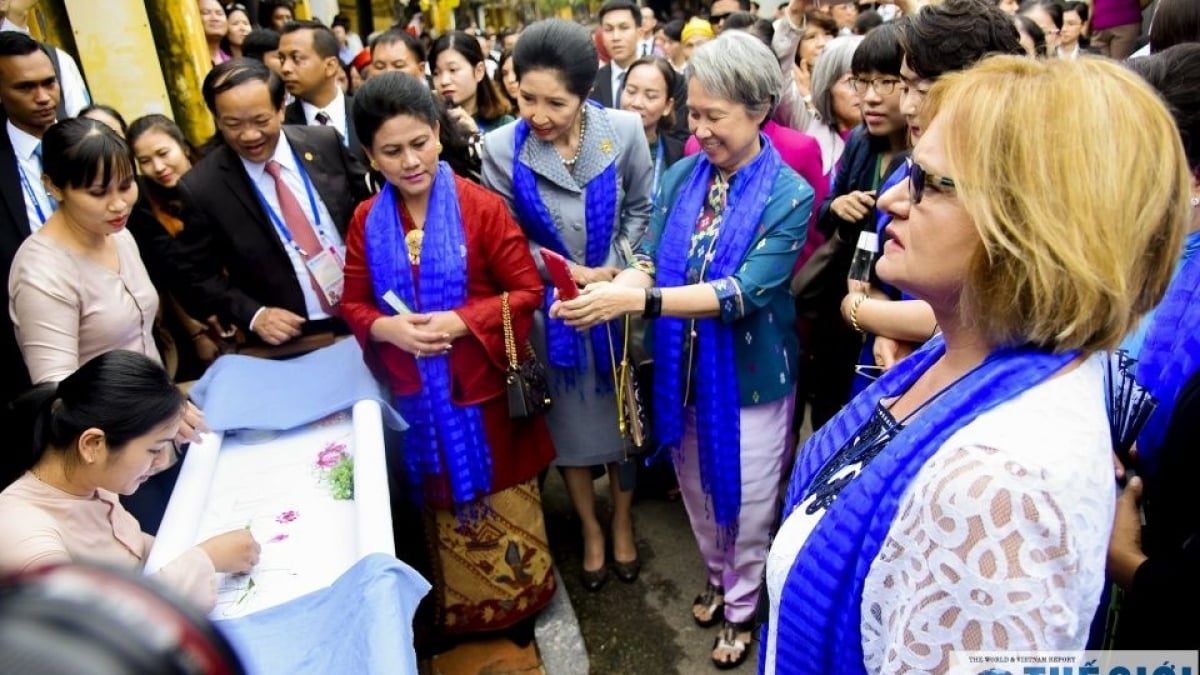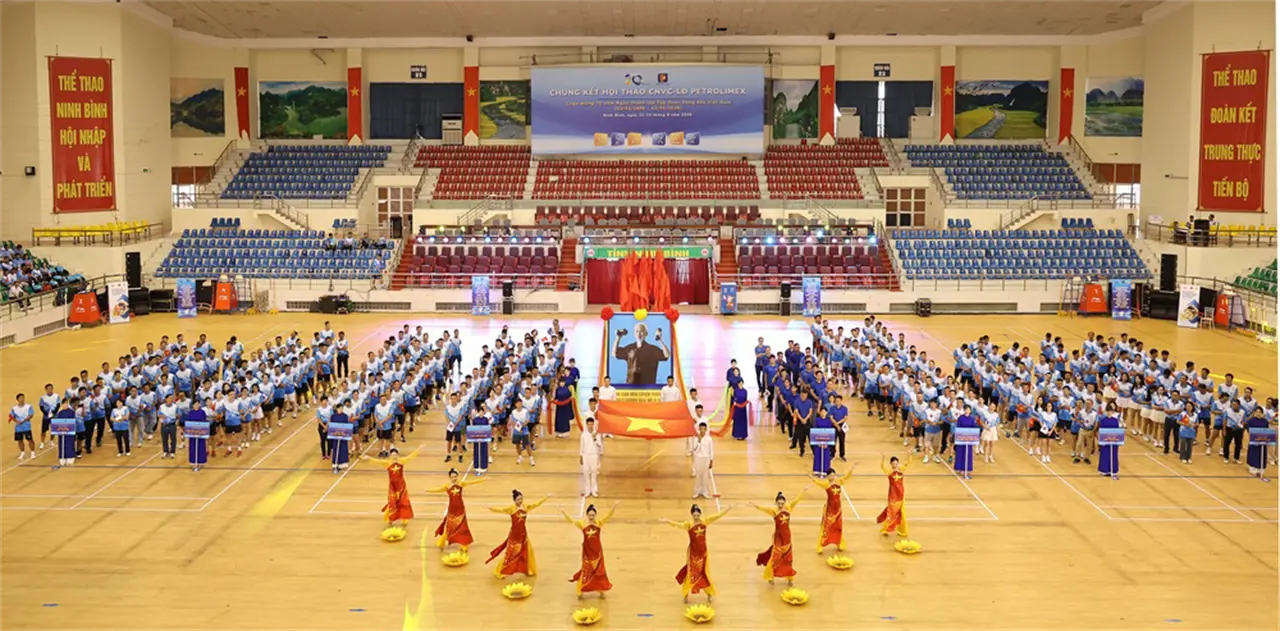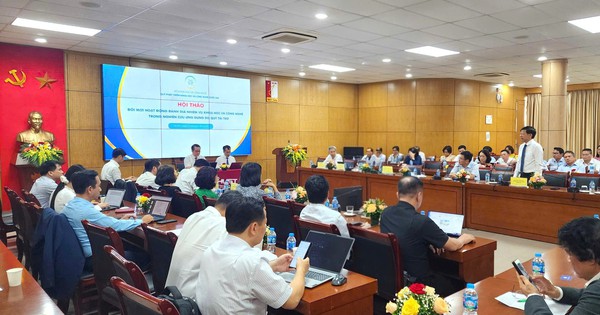Can you tell me how social insurance benefits will change when salary reform is implemented? - Reader Long Ho
 |
1. Salary reform: How will social insurance benefits change?
* According to point c, clause 3.1, sub-section 3, Section II of Resolution 27/NQ-TW in 2018, the determination of specific factors for designing a new salary table includes:
- Abolish the current basic salary and salary coefficient, build the basic salary with a specific amount in the new salary table.
- Unify the labor contract regime according to the provisions of the Labor Code (or service provision contracts) for those doing executive and service work (requiring training level below intermediate level), not applying the salary scale of civil servants and public employees to these subjects.
- Determine the lowest salary level of civil servants and public employees in the public sector as the salary level of those doing jobs requiring intermediate training (level 1) not lower than the lowest salary level of trained workers in the business sector.
- Expanding the wage relationship as a basis for determining specific wage levels in the payroll system, gradually approaching the wage relationship of the enterprise sector in accordance with State resources.
- Complete the regular salary increase regime and early salary increase regime for cadres, civil servants, public employees and armed forces in accordance with the provisions of the table.
* Also in sub-section 6, Section III of Resolution 27/NQ-TW in 2018, regulations on improving the effectiveness and efficiency of state management include the following tasks:
Amend and improve the law on cadres, civil servants, public employees, labor, enterprises, social insurance and laws related to salary policies in the public sector and enterprise sector; promote decentralization and grant autonomy to agencies, organizations and units in recruiting, using, evaluating, appointing, disciplining, paying salaries and managing cadres, civil servants, public employees and laborers in enterprises to improve productivity, quality and efficiency of agencies, organizations, units and enterprises. Build a national database on subjects and salaries of cadres, civil servants and public employees, ensuring connectivity and integration with other relevant national databases.
Thus , when reforming wages, the basic salary will be abolished, and currently many social insurance benefits are calculated based on the basic salary. Therefore, the law on social insurance will be amended and perfected in the direction that social insurance benefits will no longer be calculated based on the basic salary but will be converted into a certain amount of money.
2. Social insurance benefits are calculated based on the basic salary.
Accordingly, social insurance benefits are calculated based on the basic salary including:
(1) The level of health recovery and recuperation benefits after illness per day is equal to 30% of the basic salary (Article 29 of the Law on Social Insurance 2014).
(2) One-time allowance for childbirth or adoption (Article 38 of the Law on Social Insurance 2014):
- Female employees who give birth or employees who adopt children under 6 months old are entitled to a one-time allowance for each child equal to 2 times the basic salary in the month the female employee gives birth or the month the employee adopts the child.
- In case of giving birth but only the father participates in social insurance, the father will receive a one-time allowance equal to 02 times the basic salary in the month of birth for each child.
(3) The level of benefit for recuperation and health recovery after maternity leave is equal to 30% of the basic salary per day (Article 41 of the Law on Social Insurance 2014).
(4) Allowance for loss of working capacity (Articles 46, 47, 50 of the Law on Social Insurance 2014):
- One-time allowance: 5% reduction in working capacity will receive 5 times the basic salary, then for each additional 1% reduction, an additional 0.5 times the basic salary;
- Monthly allowance: 31% reduction in working capacity will receive 30% of the basic salary, then for each additional 1% reduction, an additional 2% of the basic salary will be received.
- Service allowance: Employees whose working capacity is reduced by 81% or more, who are paralyzed by the spine or blind in both eyes or have amputated or paraplegic limbs or are mentally ill, in addition to the benefits prescribed in Article 47 of the Law on Social Insurance 2014, are also entitled to a monthly service allowance equal to the basic salary.
(5) One-time benefit for death due to work accident or occupational disease (Article 51 of the Law on Social Insurance 2014)
If a worker dies due to a work accident or occupational disease while working, or dies during the first treatment period due to a work accident or occupational disease, his/her relatives will receive a one-time allowance equal to 36 times the basic salary.
(6) Level of benefits for recuperation and health recovery after treatment of injuries and illnesses (Article 52 of the Law on Social Insurance 2014)
The daily benefit is equal to 25% of the basic salary if resting and recovering at home; equal to 40% of the basic salary if resting and recovering at a centralized facility.
(7) The funeral allowance is equal to 10 times the basic salary (Articles 66 and 80 of the Law on Social Insurance 2014).
(8) The monthly death benefit for each relative is equal to 50% of the basic salary; in case the relative has no direct caregiver, the monthly death benefit is equal to 70% of the basic salary (Article 68 of the Law on Social Insurance 2014).
Source



![[Photo] President Luong Cuong receives delegation of the Youth Committee of the Liberal Democratic Party of Japan](https://vstatic.vietnam.vn/vietnam/resource/IMAGE/2025/8/22/2632d7f5cf4f4a8e90ce5f5e1989194a)
![[Photo] Prime Minister Pham Minh Chinh chairs the conference to review the 2024-2025 school year and deploy tasks for the 2025-2026 school year.](https://vstatic.vietnam.vn/vietnam/resource/IMAGE/2025/8/22/2ca5ed79ce6a46a1ac7706a42cefafae)
![[Photo] President Luong Cuong attends special political-artistic television show "Golden Opportunity"](https://vstatic.vietnam.vn/vietnam/resource/IMAGE/2025/8/22/44ca13c28fa7476796f9aa3618ff74c4)





































































































Comment (0)